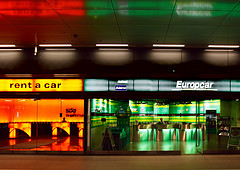
flic.kr/p/87UcNf
The day that you make your final payment on a car lease should be a happy event. But when the dealer hands you an invoice with a fat outstanding balance, delight can quickly turn to depression.
Disposal fee for $250. Extra miles for $1000. Worn tires and replacement light bulb for $200. All of a sudden, you’re faced with extra fees that can nickel-and-dime you into hundreds or even thousands of dollars of unexpected debt.
Getting the most out of your lease should mean ending up with the least possible closing fees. Be aware of the following additionals to keep your lease-end costs to a minimum:
Disposition Fee
If you decide against buying your vehicle at the end of the lease, you may be subject to a disposition fee. Lease agents will attempt to justify this charge as compensation for the expenses incurred in selling or otherwise disposing of the vehicle. The disposition fee typically consists of administrative charges, the dealer’s costs to prepare the car for resale and any other penalties. Insist that your agent or dealer clearly states these terms in your contract before you sign on the dotted line. You will be in no position to negotiate at the end of your lease, and you agent can apply your refundable security deposit to cover any outstanding amounts owing.
Excess Mileage
Your lease contract will include a specified number of miles that you are allowed to drive over the term of your lease. Almost all leasing companies will charge a premium for each mile beyond the agreed upon mileage stated in your contract. This penalty can be as high as 25 cents per mile, and the additional charges can add up quickly. Be sure to check the “per mile” charge in your agreement before you sign. To avoid the risk of running thousands of dollars in excess mileage penalties at the end of your term, be realistic about the mileage limit you’ll require. If you think the specified limit is too low to meet your personal needs, try to negotiate a higher mileage limit with your dealer. The extra cost added to your monthly lease cost will be much more manageable than the potential of thousands of dollars in penalties at the end of your term.
Excess Wear and Tear
Obviously, your leased vehicle will incur some amount of wear or damage over the course of your lease term. However, you can be charged for incidental damages or what the leasing agent deems to be “excessive” as opposed to “normal” use. Sadly, you may be left at the mercy of the dealer when he or she makes the final calculations. Note the terms “excessive”, “deems”, and “normal”. There is no standard formula to define what’s “normal” and “excessive” and the leasing company has the final say in assessing, or “deeming” the degree of damage and the final charges. Be cautious of unscrupulous leasing agents who set stringent wear-and-tear standards. Remember to read the full description of the wear-and-tear terms in your lease agreement. If your leased vehicle is damaged before the end of the lease, you may find it less expensive to repair the damage yourself than pay the excessive charges set by the agent or dealer. If you do find yourself in a dispute over the charges at the end of your lease, hire an independent third party to conduct a professional appraisal. The appraisal should detail not only the degree of damages, but also the amount for parts and repairs. This third-party estimate may help to lessen the wear-and-tear amount owing upon completion of your lease term.
Don’t allow the excitement of your final lease payment be overshadowed by the reality of exorbitant end-of-lease fees. Get the facts up front and take steps to reduce exorbitant charges.
Tagged with: lease fees • work from home
Filed under: Home Business - MYO